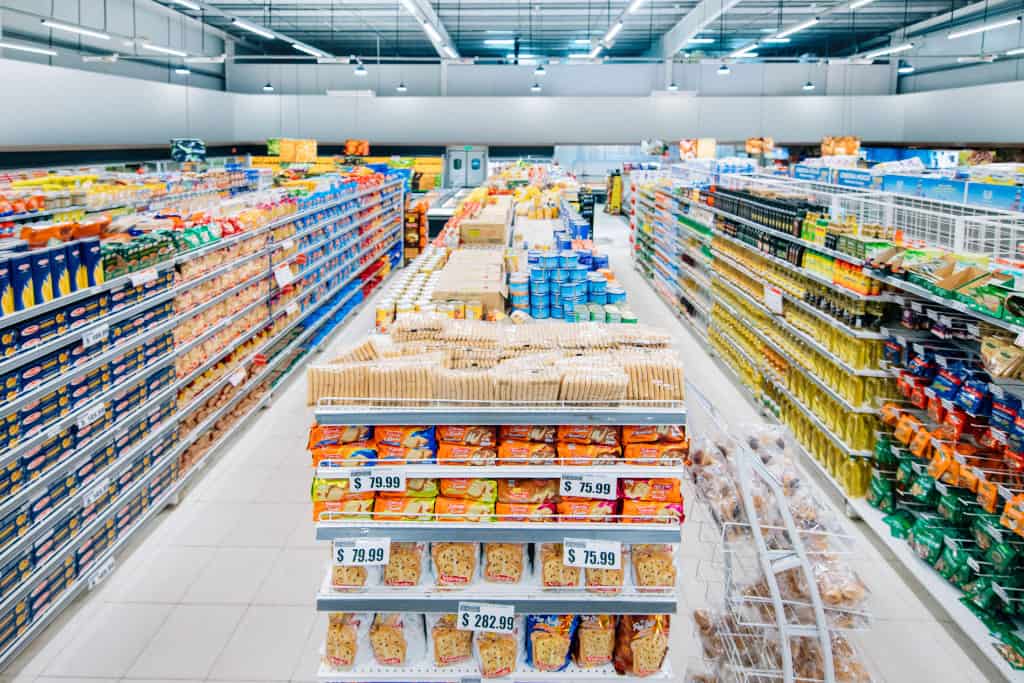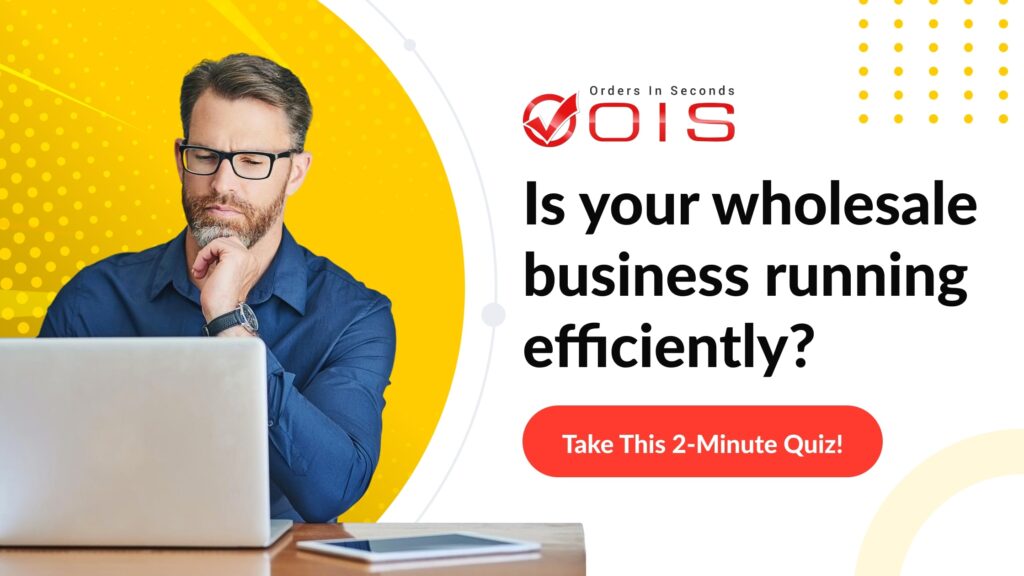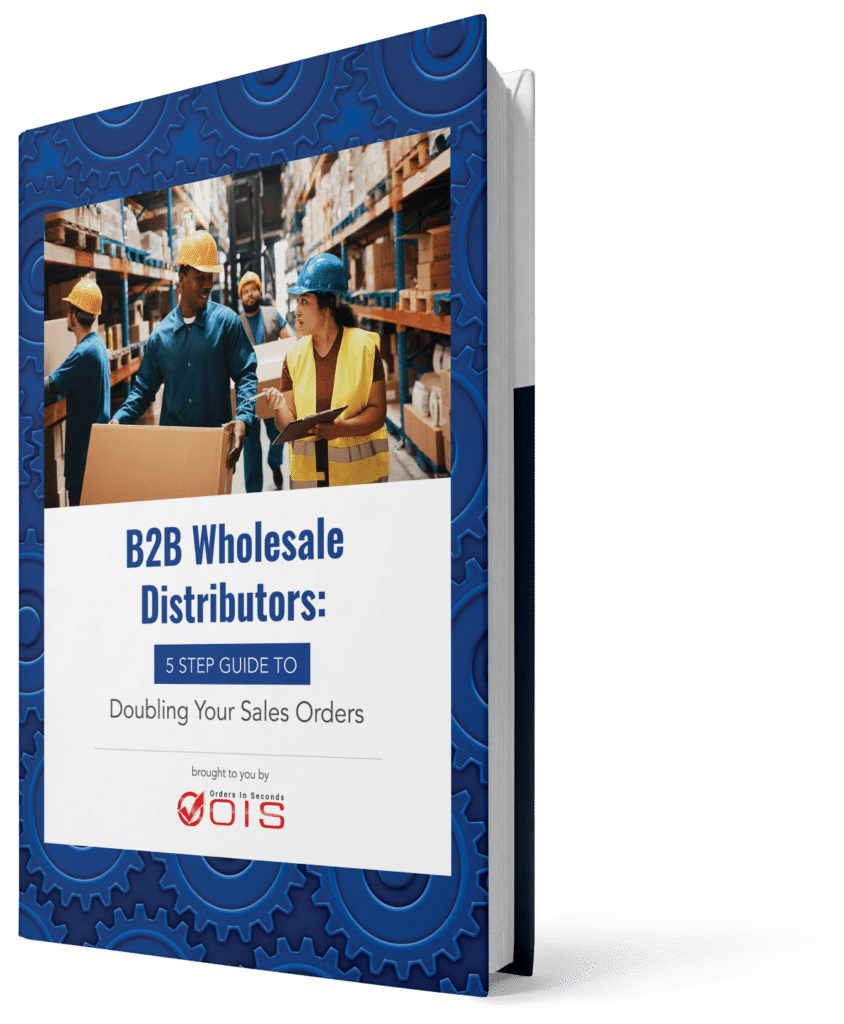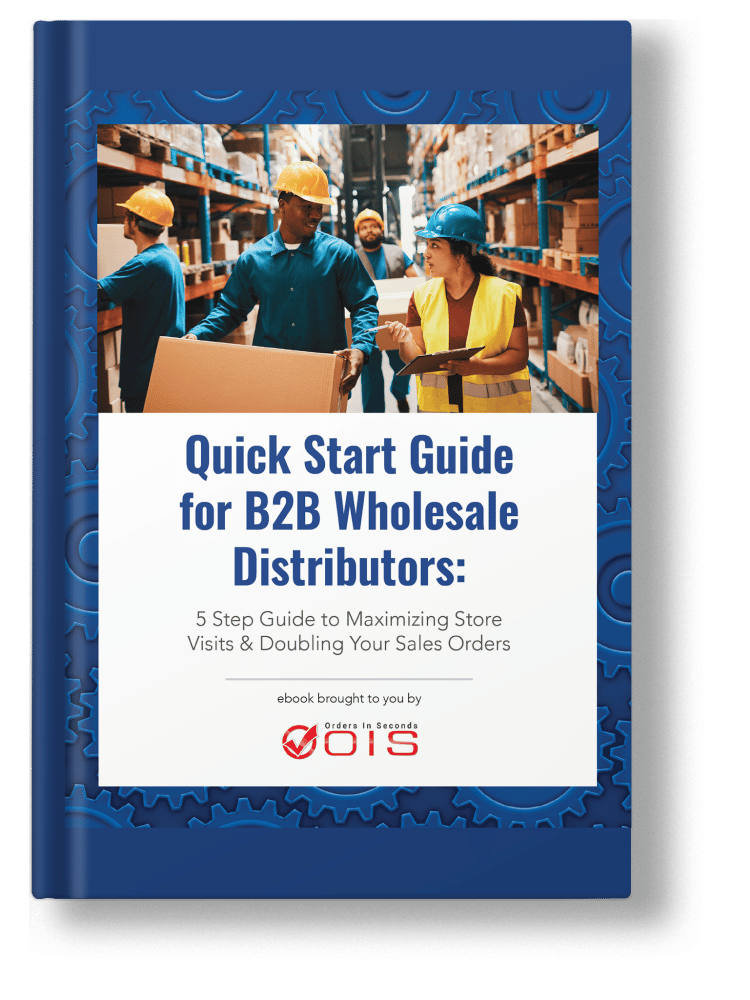In 2025, the consumer packaged goods (CPG) industry is dominated by global giants like Nestlé, Procter & Gamble, PepsiCo, Unilever, and Coca-Cola, which lead through innovation, sustainability, and robust digital strategies.
Nestlé tops the charts with nearly $104 billion in 2023 revenue, leveraging AI and e-commerce to double consumer data and enhance engagement. Procter & Gamble excels in personal care and household products, using AI for personalized offers and reporting a 7% e-commerce sales increase. PepsiCo leads in beverages, focusing on recyclable packaging and health-centric products. Unilever and Coca-Cola round out the top, with the latter facing challenges from shifting consumer preferences but maintaining iconic status through digital platforms like its Lens Platform.
These companies drive market trends by prioritizing sustainability, direct-to-consumer models, and health-focused innovations to meet evolving demands.
Key Takeaways
- Market leaders in the CPG industry, such as Nestle, PepsiCo, Procter & Gamble, and others, are adapting to trends like DTC models, challenger brands, and digital solutions to maintain their dominance.
- Innovation, mergers and acquisitions, and a focus on sustainability are key strategies CPG companies employ to stay competitive and meet consumer demands.
- CPG companies oversee their financial health by monitoring KPIs like debt-to-equity ratio and revenue growth. They closely track the company's revenue to understand the impact of their brand strategies on financial performance.
- CPG brands spend significantly on advertising to compete in a crowded market, particularly in the food and beverage sectors. Collectively, they allocate over $39 billion to digital ads, reflecting an increasing trend in spending as online shopping becomes more popular.
Table of Contents
- What are Consumer Packaged Goods (CPG)?
- What are CPG Brands?
- Understanding the CPG Industry Landscape
- The Titans of the CPG World
- The Role of CPG Brands in Daily Life
- Digital Solutions Transforming CPG Brands
- Retail Customers vs. CPG Consumers
- The Synergy Between CPG Marketing and Brand Recognition
- The Economics of Shelf Space for CPG Products
- Consumer Behavior and CPG Trends
- The Evergreen Demand for Household and Food Products
- Direct to Consumer: A New Frontier for Top CPG Brands
- The Financial Health of CPG Giants
- Navigating Regulatory Compliance in the CPG Sector
- Sustainability Initiatives in the CPG Industry
- Summary
- Frequently Asked Questions
- OIS: Your CPG Industry Partner for Streamlined Operations
What are Consumer Packaged Goods (CPGs)?
CPG stands for Consumer Packaged Goods. These are products that are used daily by consumers and require regular replacement or replenishment, such as food, beverages, toiletries, and cleaning products. CPGs are typically sold in retail outlets, and their sales are often influenced by consumer habits and economic conditions.
Key characteristics of CPGs
They are tangible products. This means you can touch and hold them, unlike services like haircuts or car washes.
They have a relatively short shelf life. This means they will expire or go bad over time, unlike durable goods like furniture or appliances.
They are sold at a relatively low price point. This makes them accessible to a wide range of consumers.
They are often branded. This means they have a recognizable name and logo, which helps to differentiate them from their competitors.
What are the 5 main categories of CPGs?
Food and beverages: This includes items like bread, milk, soda, cereal, and chips.
Household products: This includes items like laundry detergent, paper towels, trash bags, and cleaning supplies.
Personal care products: This includes items like shampoo, soap, toothpaste, and deodorant.
Beauty products: This includes items like makeup, skincare products, and hair care products.
Over-the-counter drugs: This includes items like pain relievers, allergy medication, and cold medicine.
What are a CPG Brands?
Consumer packaged good brands are businesses that manufacture, market, and sell the everyday items you find lining the shelves of grocery stores, convenience stores, and pharmacies. CPG marketers play a crucial role in overseeing comprehensive and intricate marketing strategies for these consumer packaged goods. These are the products we use up and replace frequently, like food, beverages, household supplies, personal care items, and more.
Key characteristics of CPG brands
They produce a wide range of products: A single CPG company might have hundreds or even thousands of different products under its umbrella, each targeting a specific need or niche.
They focus on mass production and distribution: CPG companies need to efficiently produce and distribute their products to reach a large consumer base and keep costs low.
They rely heavily on branding and marketing: Strong brands and effective marketing campaigns are crucial for CPG companies to stand out in a crowded marketplace.
They face intense competition: The CPG industry is highly competitive, with companies constantly vying for market share and shelf space.
Examples of well-known CPG brands
Food and beverages: Nestle, Unilever, PepsiCo, Coca-Cola, Kraft Heinz
Household products: Procter & Gamble, Clorox, Kimberly-Clark, SC Johnson & Son
Personal care products: L’Oreal, Johnson & Johnson, Colgate-Palmolive, Unilever
Beauty products: Estee Lauder, L’Oreal, Avon, Shiseido
Top Consumer Packaged Goods (CPG) Brands List
The consumer packaged goods (CPG) industry is dominated by several major players known for their extensive product lines and global reach. Here are some of the top CPG brands:
Procter & Gamble (P&G) – Known for brands like Tide, Gillette, and Pampers.
Unilever – Famous for products such as Dove, Knorr, and Lipton.
Nestlé – A leader in food and beverage with brands like Nescafé, KitKat, and Gerber.
PepsiCo – Offers a wide range of beverages and snacks including Pepsi, Lay’s, and Gatorade.
Coca-Cola – Iconic for its beverages like Coca-Cola, Sprite, and Fanta.
Johnson & Johnson – Known for health and personal care products like Band-Aid, Listerine, and Johnson’s Baby.
Kraft Heinz – Famous for its condiments, sauces, and snacks including Heinz Ketchup and Kraft Mac & Cheese.
Colgate-Palmolive – Known for oral hygiene products such as Colgate toothpaste and Palmolive soap.
Understanding the CPG Industry Landscape

The consumer goods industry, which includes durable goods, is a dynamic and intricate market that continuously evolves to cater to consumer demands. Established industry players are rapidly adopting direct-to-consumer (DTC) channels, a testament to the importance of customer-centric strategies in today’s market. Still, this transformation is not without its challenges. Workforce issues, supply chain complexities, and inflationary pressures are some of the hurdles that CPG companies must navigate.
Companies such as Procter & Gamble, Nestle, PepsiCo, and Unilever are examples of successful consumer packaged goods companies that have established a prominent presence in the CPG industry. Their success can be attributed to their ability to adapt to the emerging trends in the consumer goods sector. Some of these trends include:
- The shift towards DTC (Direct-to-Consumer) models
- The rise of challenger brands
- The surge in social commerce
- The increase in digital media consumption
These trends are reshaping the CPG industry and companies that can effectively navigate and leverage them are likely to thrive.
If you’re a wholesale distributor in the CPG industry navigating workforce challenges, supply chain complexities, and the evolving landscape, you can take a look at our free eBook: ‘Avoid the 5 Mistakes Wholesale Distributors Make.’ Gain valuable insights into common mistakes and strategies to thrive in this dynamic market.
CPG Indirect Material Sourcing
Indirect materials, often referred to as MRO (Maintenance, Repair, and Operations) items, are essential for the smooth functioning of a CPG company’s operations but aren’t directly incorporated into the final product. These can include:
- Office supplies: Paper, pens, ink cartridges, etc.
- Cleaning supplies: Cleaning chemicals, mops, brooms, etc.
- Maintenance supplies: Spare parts, tools, lubricants, etc.
- IT equipment: Computers, servers, network equipment, etc.
Effective sourcing of these materials can significantly impact a CPG company’s overall costs and operational efficiency.
Consumer Packaged Goods (CPG) Brands
CPG brands are companies that produce and sell goods that are consumed relatively quickly. These products are typically packaged and sold in retail stores, supermarkets, and convenience stores. Examples of CPG products include:
- Food and beverages
- Personal care products
- Cleaning supplies
- Household goods
- Over-the-counter medications
Consumer packaged goods manufacturing is the process of producing these goods in large quantities for distribution to retailers. CPG manufacturing often involves complex supply chains, sophisticated production processes, and stringent quality control measures.
CPG manufacturing is a highly competitive industry with many large, multinational companies. Some of the most well-known CPG companies include:
- Nestlé
- Procter & Gamble
- Unilever
- PepsiCo
- Coca-Cola
Only Company is not a widely recognized term in the CPG industry. It’s possible that you may be referring to a specific company or a particular business model. If you can provide more context, I may be able to offer a more accurate answer.
Market capitalization is the total value of a company’s outstanding shares of stock. It is calculated by multiplying the number of shares by the current market price per share. Market capitalization is often used as a measure of a company’s size and financial health.
Consumer Packaged Goods (CPG) Solutions
CPG solutions are strategies and technologies designed to address the unique challenges and opportunities in the CPG industry. These solutions can focus on various areas, including:
- Supply Chain Optimization: Improving efficiency and reducing costs in the supply chain.
- Demand Forecasting: Predicting future demand to optimize production and inventory levels.
- Product Development: Developing innovative products that meet consumer needs and preferences.
- Marketing and Sales: Implementing effective marketing strategies and sales channels.
- Customer Relationship Management (CRM): Building strong relationships with customers and retailers.
CPG Industry Outlook
The CPG industry is constantly evolving, driven by factors such as:
- Consumer Trends: Shifting consumer preferences towards health, sustainability, and convenience.
- Technological Advancements: Digital technologies like AI, IoT, and big data are reshaping the industry.
- Economic Factors: Economic conditions, including inflation and recession, can impact consumer spending.
- Regulatory Changes: Government regulations can affect product labeling, packaging, and marketing.
CPG Industry Trends 2025
The consumer packaged goods (CPG) industry is poised for significant transformation in 2025, driven by evolving consumer demands and rapid technological advancements. One of the most prominent trends is the increased focus on sustainability and eco-friendliness. Consumers are becoming more environmentally conscious, seeking products that minimize environmental impact. This shift is pushing CPG brands to adopt sustainable practices, from sourcing raw materials to packaging and distribution.
Health and wellness products are also seeing a surge in demand. Consumers are gravitating towards organic and natural food options, reflecting a broader trend towards healthier lifestyles. This growing preference is prompting CPG companies to innovate and expand their product lines to include more health-centric offerings.
E-commerce and digital shopping continue to rise, with CPG brands investing heavily in online platforms and digital advertising. The convenience of online shopping, coupled with the ability to reach a global audience, makes e-commerce a critical channel for growth. Additionally, the use of artificial intelligence and machine learning is revolutionizing supply chain efficiency and customer engagement. These technologies enable CPG companies to optimize operations, predict consumer behavior, and personalize marketing efforts.
Social media and influencer marketing are becoming increasingly important. CPG brands are partnering with social media influencers to promote their products, leveraging their reach and credibility to connect with consumers. This strategy not only enhances brand visibility but also builds trust and loyalty among target audiences.
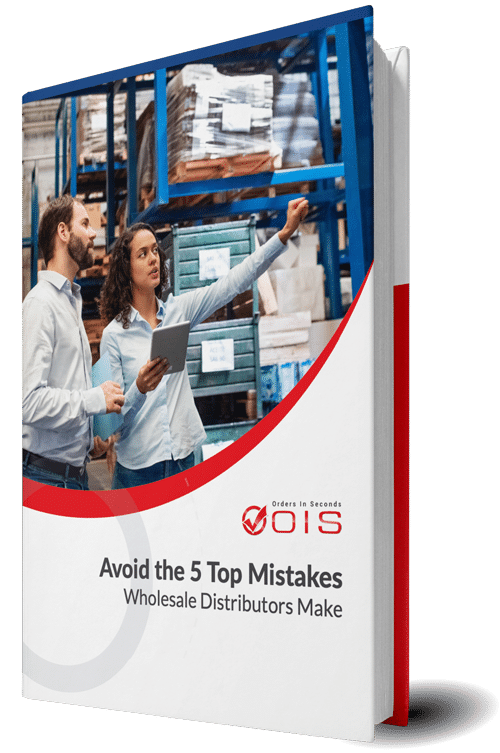
Avoid the Top 5 Mistakes Wholesale Distributors Make
Are you making one of the top 5 mistakes that plague wholesale distributors? Download our free eBook to find out. We’ve also included tips and guidance to help you save time and avoid costly mistakes.
Leading CPG Brands in the Industry
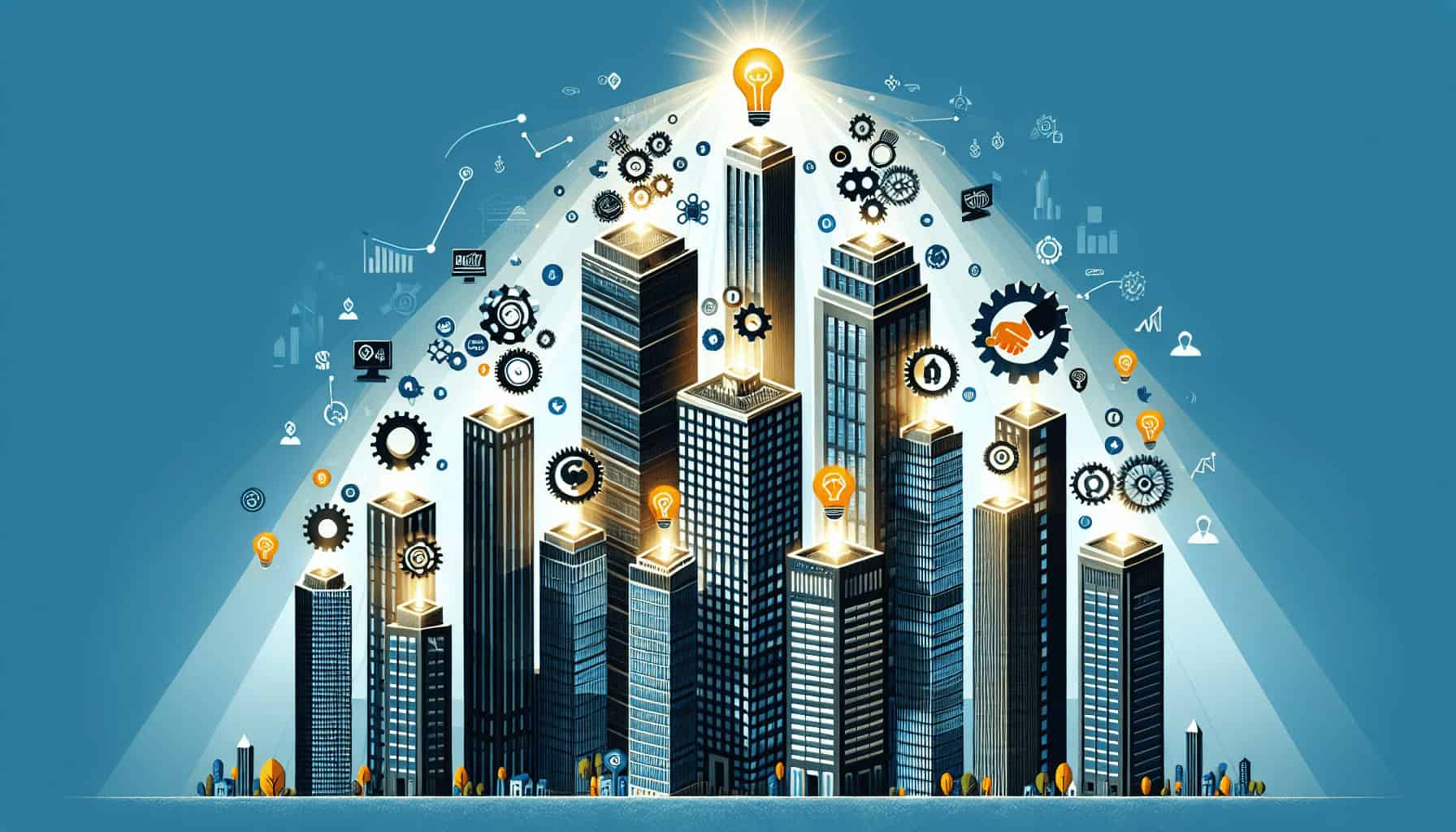
The CPG industry is dominated by several major players, namely:
- Nestle SA
- PepsiCo
- Procter & Gamble
- JBS S.A.
- Unilever N.V.
- Anheuser-Busch InBev
- Tyson Foods
- LVMH
These brands have carved a niche for themselves in this highly competitive market, thanks to their robust strategies, innovative technologies, and an unwavering focus on the customer.
Unveiling Market Leaders
Nestle, PepsiCo, and Procter & Gamble are market leaders in the CPG industry, closely related to retail companies. Nestlé’s market leadership is attributed to its comprehensive marketing approach that encompasses market penetration, branding, and positioning to appeal to consumers.
Similarly, PepsiCo’s prominence in the CPG sector can be attributed to:
- Its strategic focus on the plant-based market
- Robust revenue streams from its well-established brands
- Leadership in customer loyalty programs and analytics.
Unilever, on the other hand, has utilized market-oriented strategies, product development, and a commitment to corporate social responsibility to solidify its position among leading consumer goods companies.
Innovations Driving Success
The key to the success of the CPG industry lies in innovation. Some notable innovations include:
- Hyper-personalization
- Sustainability initiatives
- Incorporation of digital technologies into operations, such as the use of big data analytics by Procter & Gamble to optimize its supply chain.
These innovations help companies create products that resonate with consumers and stay ahead in the market.
Indeed, innovation plays a significant role in enhancing the competitive advantage of CPG companies by improving performance, strategic management, and measurement effectiveness. It enables companies to capitalize on growth opportunities, leverage macroeconomic factors, and attain business benefits.
Impactful Mergers and Acquisitions
The growth of CPG companies is also significantly propelled by mergers and acquisitions (M&A). They provide an avenue for these companies to expand their market presence, acquire new technologies, or diversify their product portfolios.
Notable M&A activities in the CPG industry include Hershey’s acquisition of Dot’s, Coca-Cola’s purchase of the remaining stake in BodyArmor, and Mondelēz International’s acquisition of Clif Bar. These strategic moves have allowed these companies to expand their footprint and remain competitive in the CPG market landscape.
CPG Mergers & Acquisitions Clean Room
A CPG (Consumer Packaged Goods) Mergers & Acquisitions Clean Room is a secure environment where parties involved in a potential deal can exchange confidential information without the risk of it being disclosed to unauthorized individuals. This is especially important in the CPG industry, where sensitive data like product formulas, marketing strategies, and financial information can be highly valuable.
Key Components of a CPG M&A Clean Room:
- Secure Data Exchange: A platform or system that allows parties to share documents, presentations, and other materials in a controlled and encrypted manner.
- Access Controls: Strict rules and procedures to manage who can access the clean room and what information they can view.
- Audit Trails: A record of all activities within the clean room, including who accessed the information and when.
- Confidentiality Agreements: Legal documents that bind all parties involved to maintain the confidentiality of the information shared.
Benefits of Using a CPG M&A Clean Room:
- Reduced Risk of Data Breaches: By limiting access to sensitive information, a clean room can help prevent unauthorized disclosure.
- Faster Deal Closing: By streamlining the due diligence process, a clean room can accelerate the timeline for a deal.
- Improved Negotiation Outcomes: By providing a neutral and secure environment, a clean room can foster trust and collaboration between parties.
The Role of CPG Brands in Daily Life

CPG brands hold an indispensable place in our daily lives. From Dove for personal care to Coca Cola and Pepsi for beverage needs, these brands are a part of our routines. They are not just products that we consume; they are brands that we trust and rely on for our well-being.
In the personal care and hygiene sector, consumer packaged goods brands offer a diverse range of consumer packaged goods to meet the beauty and health requirements of consumers. They have also made significant contributions to improving our diet and nutrition by responding to consumer demands for healthier and more natural food options. As a result, these CPG brands have become an integral part of our lives, influencing our choices and shaping our experiences.
Digital Solutions Transforming CPG Brands

Digital solutions are significantly contributing to the transformation of the CPG industry. E-commerce, for instance, is enabling companies to have direct oversight of distribution and shipping, leading to improved punctuality and reduced instances of out-of-stock products. These platforms also provide a unique opportunity for CPG brands to engage directly with their customers and understand their needs better.
Beyond e-commerce and online sales, digital solutions also provide significant operational advantages. They enable end-to-end visibility of core product information, accelerate product time to market, and promote digital transformation, among other benefits. These innovations are reshaping the landscape of the CPG industry, and companies that can harness these digital solutions will be at the forefront of the industry.
For wholesale distributors in the CPG industry seeking to elevate sales strategies, our eBook ‘Double Your Sales Orders in 5 Steps’ is a must-read. Learn the secrets to leveraging digital solutions, enhancing operational efficiency, and much more.
CPG Marketing and Branding Strategies
In the competitive world of consumer packaged goods, effective marketing and branding strategies are essential for success. Building strong brand identities and creating emotional connections with consumers are at the heart of these strategies. CPG companies invest in crafting compelling brand stories that resonate with their audience, fostering a sense of loyalty and trust.
Digital advertising and social media marketing are pivotal in reaching a wider audience. By leveraging platforms like Facebook, Instagram, and TikTok, CPG brands can engage with consumers in real-time, share content, and run targeted ad campaigns. These digital channels offer unparalleled opportunities to connect with consumers, gather feedback, and refine marketing strategies.
Targeted marketing campaigns are another key strategy. By segmenting their audience based on demographics, preferences, and behaviors, CPG companies can tailor their messages to specific consumer groups. This personalized approach increases the relevance and effectiveness of marketing efforts, driving higher engagement and conversion rates.
Creating engaging content and experiences is crucial for building brand loyalty and advocacy. CPG brands are increasingly focusing on interactive and immersive experiences, such as virtual product trials, live streaming events, and user-generated content campaigns. These initiatives not only captivate consumers but also encourage them to become brand advocates.
Partnering with influencers and celebrities is a powerful way to boost brand awareness and credibility. Influencers bring authenticity and relatability, making them ideal ambassadors for CPG products. By collaborating with well-known personalities, CPG brands can tap into their followers’ trust and expand their reach.
CPG Suppliers
CPG suppliers are the companies that provide the raw materials, ingredients, packaging, and other essential components needed for the production of consumer packaged goods. These suppliers play a critical role in the CPG industry by ensuring that manufacturers have access to the high-quality materials they need to produce their goods. CPG suppliers may include farmers, chemical manufacturers, packaging companies, and logistics providers.
The relationship between CPG manufacturers and their suppliers is crucial for maintaining product quality, reducing costs, and ensuring a smooth supply chain. In recent years, there has been a growing focus on sustainable sourcing and ethical practices among CPG suppliers, driven by consumer demand for environmentally friendly products.
Within the CPG ecosystem, retail customers and CPG consumers represent two distinct groups. Retail customers are the end-users who engage in product purchases with a focus on experiences. On the other hand, CPG consumers, including manufacturers, sellers, and marketers, exert significant influence on the industry through their product requirements and consumption trends.
The relationship between retailers and CPG companies impacts the operations of CPG companies in various ways. It influences:
- The allocation of shelf space in retail stores
- The pricing of products
- The strategies that CPG companies use to engage both retail customers and end consumers
These dynamics play a crucial role in shaping the CPG industry.
CPG Clients
CPG clients are companies that operate in the consumer packaged goods industry. This includes manufacturers and distributors of products such as food, beverages, household goods, personal care items, and over-the-counter medications.
CPG Agencies
Retail and CPG Marketing Agency
A retail and CPG marketing agency specializes in developing and executing marketing strategies for businesses in the retail and consumer packaged goods sectors. These agencies often have expertise in areas such as brand development, advertising, public relations, and digital marketing.

Avoid the Top 5 Mistakes Wholesale Distributors Make
Are you making one of the top 5 mistakes that plague wholesale distributors? Download our free eBook to find out. We’ve also included tips and guidance to help you save time and avoid costly mistakes.
In the CPG industry, marketing holds a central position. It not only helps in creating awareness but also cultivates brand affinity and nurtures customer loyalty. Advertising, in particular, plays a significant role in enhancing brand recognition. It provides essential information to consumers and retail buyers, educating them about the brand’s advantages.
CPG companies invest heavily in marketing to ensure that their brands are top of mind for consumers. They leverage various channels, from traditional media to digital platforms, to reach their target audience. Through targeted messaging and engaging content, they seek to create a strong connection with their audience and build a loyal customer base.
Retail store shelf space in brick and mortar stores is a coveted asset for CPG products. It directly impacts product visibility, consumer perception, and sales. High-performing categories are given more shelf space and prime locations, while lower-performing categories may have less space or a less prominent placement.
However, securing premium shelf space comes at a cost, often involving significant expenses such as slotting fees. Despite these costs, CPG companies understand the value of prime placement and are willing to invest in securing prime shelf space for their products.
Trends in the CPG industry are significantly influenced by consumer behavior. From economic factors to cultural norms, various factors influence consumer behavior, thereby shaping the trends in the market. Understanding these trends is crucial for CPG companies as it allows them to develop products that align with consumer preferences and market demands.
Over the years, consumer behavior trends in the CPG industry have undergone significant changes. Digital transformation, the rise of e-commerce, and the emergence of direct-to-consumer models are some of the changes that have significantly impacted the industry. As consumer behavior continues to evolve, CPG companies must remain agile and adapt to these changes to stay competitive.
CPG indirect managed services refer to outsourcing non-core business functions to external providers. This can include services such as IT support, HR administration, and facilities management. By outsourcing these functions, CPG companies can focus on their core competencies and reduce costs.
The consistent demand for household and food products fuels the growth and success of CPG companies. Factors such as product price, income levels, and changing consumer preferences influence this sustained demand. Seasonal trends also have a substantial impact on the demand for specific household and food products, necessitating marketers to adjust their strategies accordingly.
CPG companies monitor consumer demand through advanced analytics, such as AI and machine learning, to analyze sales data, market trends, consumer behavior, and social media sentiment. This analysis helps them to meet the evergreen demand for household and food products, which include food and beverage, cosmetics and personal care, and pet supplies.
The CPG industry is witnessing a rising popularity in direct-to-consumer (DTC) strategies. These strategies allow brands to sell products directly to customers, bypassing intermediaries. This approach not only provides a competitive advantage but also enables brands to gain valuable insights into consumer behavior.
Several factors drive the adoption of DTC strategies by CPG brands. These include the desire to realize their full potential, acknowledge the significance of retail presence, attract and retain consumers, understand the economics, and strengthen brand relationships. The advantages of DTC strategies for top CPG brands are numerous, including eliminating intermediaries, direct sales to consumers, bypassing traditional retail channels, and acquiring valuable consumer data.
Maintaining financial health is vital for the sustained success of CPG giants. Companies in the CPG industry are evaluated based on key performance indicators such as:
- Debt-to-equity ratio
- Gross profit
- Return on equity (ROE)
- Revenue growth
- Profit margins
- Inventory turnover
Financially healthy companies strategically allocate their finances for growth by investing in new products, technologies, and markets. They balance core category focus with consumer preferences and market growth opportunities. Recent market trends, including the surge of e-commerce and direct-to-consumer brands, have had a positive impact on the financial well-being of CPG giants.

Best CPG Brands to Work For
Several CPG brands stand out as top employers in the consumer packaged goods industry, offering rewarding careers and growth opportunities.
These CPG brands emphasize employee development, work-life balance, and a positive corporate culture. From renowned CPG brands like Procter & Gamble and Nestlé to innovative newcomers like Beyond Meat and KIND Snacks, they create environments where employees thrive and contribute to success. With competitive benefits, advancement opportunities, and a focus on innovation, these CPG brands attract top talent eager to impact the consumer goods sector.
CPG Firm
A Consumer Packaged Goods (CPG) firm specializes in the production, marketing, and distribution of products that are used daily by consumers. These products typically have a short shelf life and include items such as food, beverages, toiletries, and cleaning supplies. CPG firms focus on creating brand loyalty and maintaining high product turnover through extensive marketing and strategic distribution. Leading CPG firms leverage innovative technologies and data-driven strategies to stay competitive in a crowded market, ensuring their products reach a wide audience efficiently.

The importance of sustainability is steadily escalating in the CPG industry. CPG companies are implementing strategies such as:
- Using electric vehicles and optimizing logistics to reduce their environmental impact
- Reducing waste through the adoption of circular principles
- Minimizing the environmental impact of packaging
Promoting responsible consumption is another way CPG companies are embracing sustainability. Companies like:
- Hershey’s
- Montanya Distillers
- Stonyfield Organic
- Carlsberg
- Danone North America
- Alter Eco
- King
are implementing measures to adopt more sustainable business practices.
CPG Brands
So CPG brands are enterprises that produce and sell consumer packaged goods in a highly competitive market. These brands prioritize product innovation, brand management, and efficient distribution to stay ahead.
Leading CPG brands, such as Procter & Gamble, Unilever, and Nestlé, are renowned for their diverse product portfolios and global presence. They invest significantly in marketing and market research to align with consumer preferences.
The success of CPG brands hinges on consistently meeting consumer demand while balancing cost management and quality.
Fastest Growing CPG Brands
The fastest-growing CPG brands are those achieving rapid expansion through innovative products, strategic marketing, and strong market penetration. CPG brands like Beyond Meat, revolutionizing the food industry with plant-based offerings, and The Honest Company, recognized for eco-friendly goods, exemplify high-growth firms.
These CPG brands capitalize on trends like health and wellness, sustainability, and digital marketing to fuel their rise. Ongoing innovation and alignment with consumer preferences drive their continued success.
Public CPG Brands
Public CPG brands are consumer packaged goods firms listed on stock exchanges, offering their shares for public trading. Leading CPG brands like Procter & Gamble, Coca-Cola, and PepsiCo face regulatory oversight and strict reporting obligations. Their public status grants access to capital markets to fund growth and expansion initiatives.
Investors scrutinize these CPG brands’ performance, financial stability, and market strategies, making transparency and consistent results essential for sustaining investor trust.
Exploring the world of CPG brands, we find a vibrant industry driven by leading players, innovative approaches, and deep consumer engagement, all underpinned by a strong focus on sustainability. Looking ahead, the success of CPG brands will depend on their ability to adapt to evolving consumer preferences, technological innovations, and stricter regulatory standards.
Frequently Asked Questions
-
1. What are the top CPG brands in 2025?
In 2025, top CPG brands include Procter & Gamble, Nestlé, and PepsiCo, leading the market with innovative products, sustainable practices, and strong direct-to-consumer strategies.
-
2. How do CPG brands stay competitive in 2025?
CPG brands stay competitive by embracing sustainability, leveraging e-commerce, and focusing on health and wellness trends, as seen with leaders like Nestlé and P&G.
-
3. Why are CPG brands focusing on sustainability?
CPG brands prioritize sustainability to meet consumer demand for eco-friendly products and reduce environmental impact, with companies like PepsiCo adopting recyclable packaging.
-
4. Which CPG brands lead in e-commerce in 2025?
Brands like Procter & Gamble and Nestlé lead in e-commerce by investing in direct-to-consumer platforms and optimizing supply chains for faster delivery.
-
5. What trends are shaping CPG brands in 2025?
Key trends for CPG brands in 2025 include sustainability, personalized products, and digital transformation, driving growth for market leaders like PepsiCo.
OIS: Your CPG Industry Partner for Streamlined Operations
Elevate your CPG operations effortlessly with Orders in Seconds – a game-changer for manufacturers and distributors, especially for the Consumer Packaged Goods industry. The OIS Pro App streamlines order taking for DSD and Pre-Sales reps, while OIS eCommerce App offers a platform that sells 24/7. If you want to know more, you can schedule a FREE demo today!

